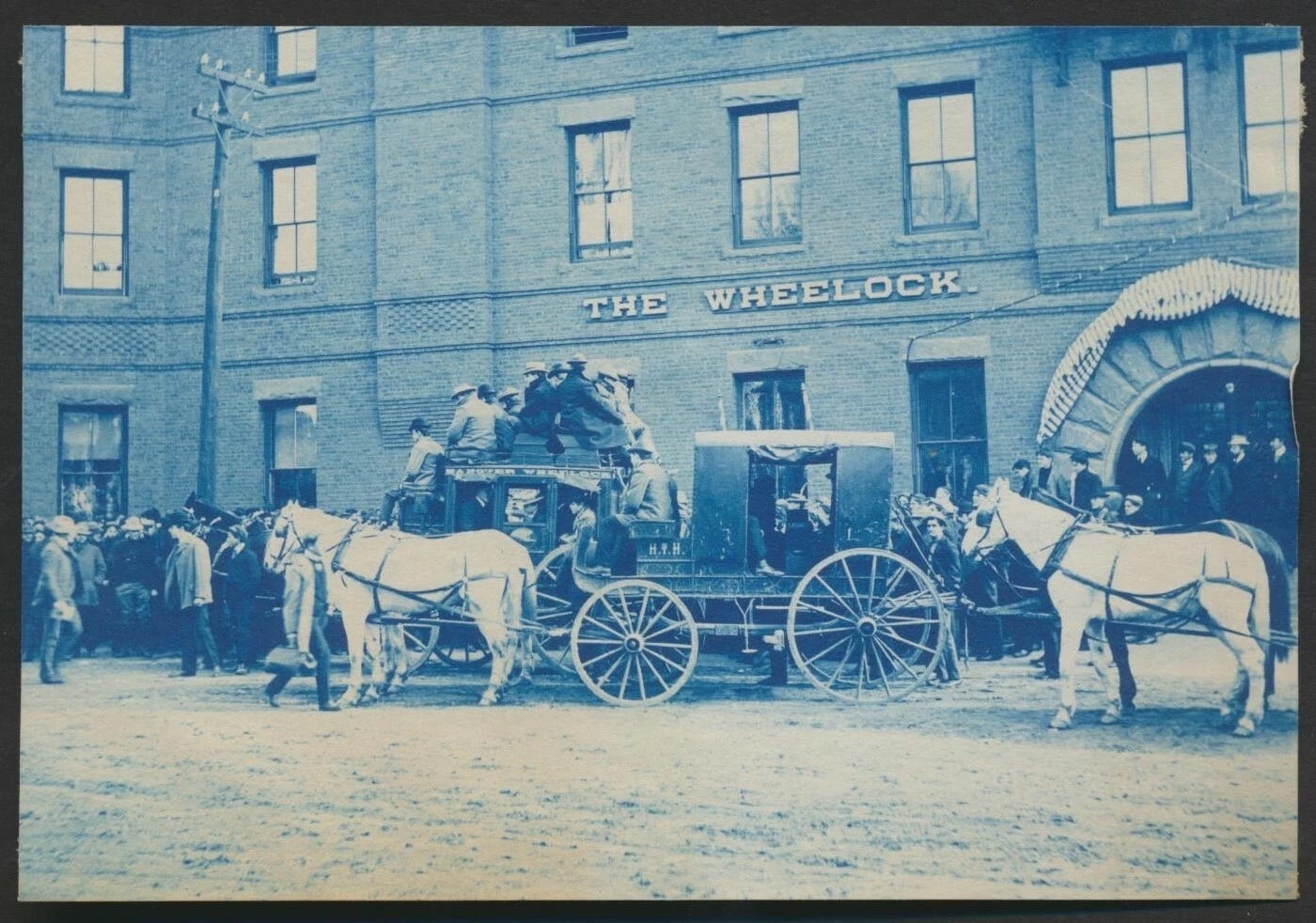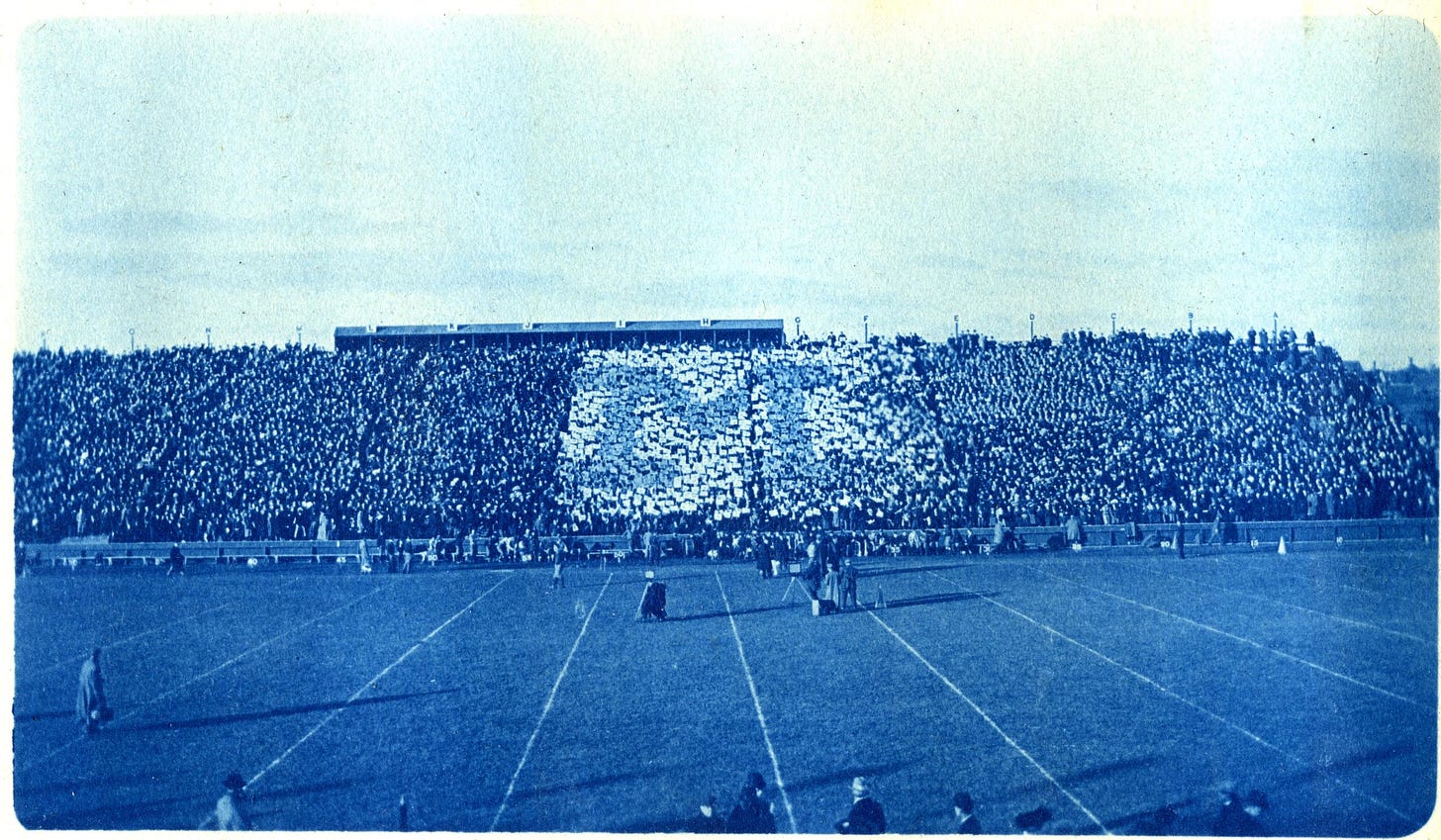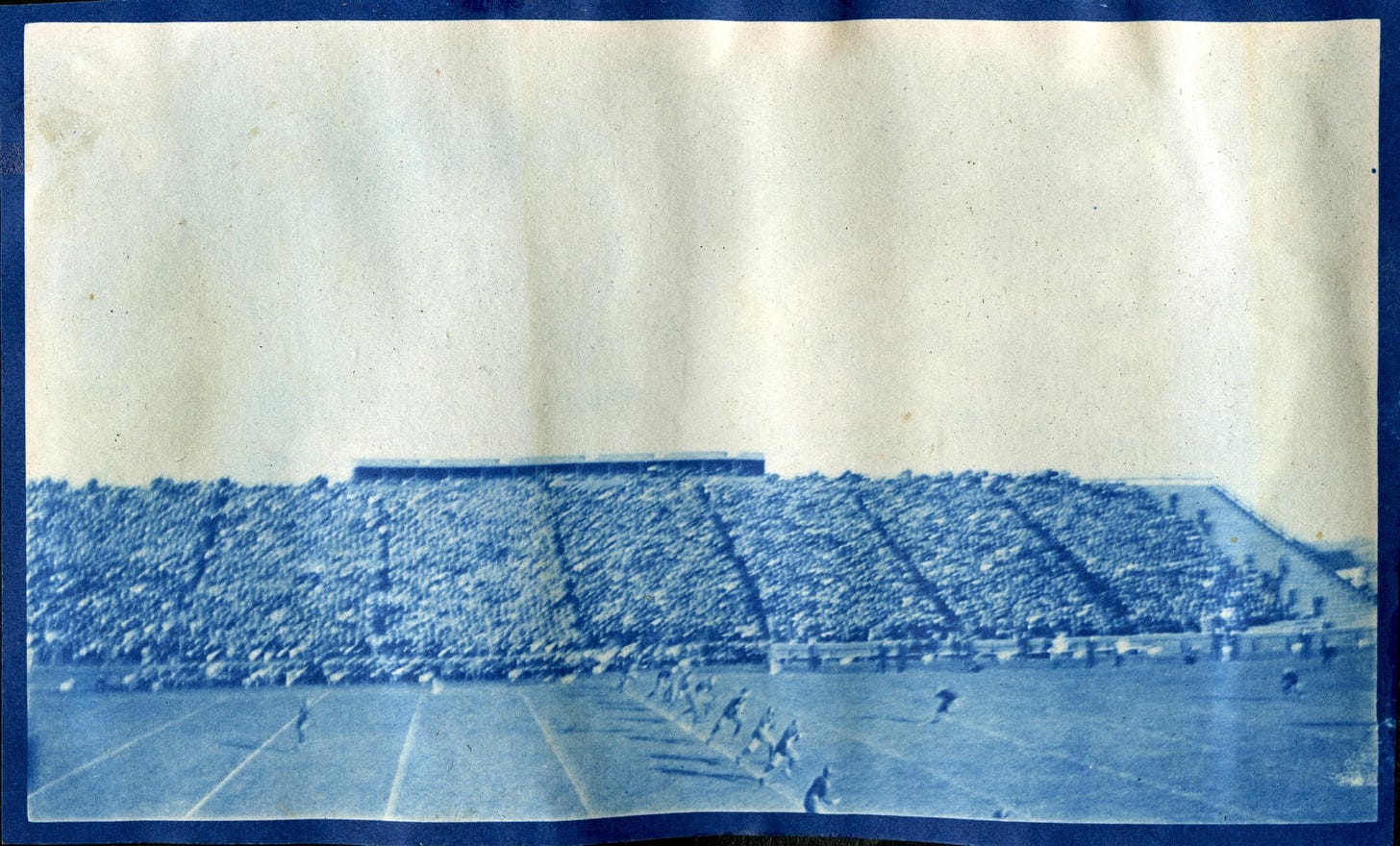Today's Tidbit... The Football Blues
Brown or sepia-toned football images take us back to the late 1890s and early 1900s. The images are often team photos that appear warm and inviting, in part because they lack the sharp contrasts of black-and-white photographs. Among my favorite sepias is the image of Penn and Columbia at the Polo Grounds in 1903. Taken during the only season when football used the partial checkerboard field, one team attempts a free kick as the subway passes on the overhead track in the background.
Sepia-toned images acquire their hue from the silver sulfides or selenides used in their development. While the photographic world settled on black-and-white photography rather than sepia tones before then transitioning to color, another approach in the battle for photographic dominance was the cyanotype. Cyanotypes are interesting because you can make one with or without a camera. The cyanotype results from placing an object on the properly coated paper or cloth, exposing the combination to sunlight, washing the paper in potassium ferricyanide, and then in plain water to stop the development, resulting in a blue-and-white image rather than a black-and-white one. The availability and simplicity of the process made it attractive to botanists. The first book featuring photographs was published in 1843, displaying cyanotypes of algae and their leaves.
Besides leaves, you can create a cyanotype print by placing a photographic negative on treated paper and exposing the combination to daylight, allowing the two approaches to be combined.
While cyanotypes are experiencing a recent resurgence, they have been primarily used for artistic purposes since the 1910s. The primary exception has been their use for architectural blueprints, which is how most people gain exposure to cyanotypes.
So, when I came across a cyanotype RPPC, I knew I had to own it, and I did. Besides being a cyanotype, it has two images, with a message written on the back in neat cursive. The message and postmark indicate that the images represent a football game involving Trinity in November 1907 in the Omaha area, likely a reference to Trinity Cathedral, an Episcopalian church. Since the top photo shows a church in the background, the bottom photo shows two minimally organized football teams, and there were no Trinity-related football stories in the newspaper archives, I assume the cyanotype images show a game between youth teams of the church variety.
With nothing to go on regarding that game, I searched for other cyanotype football images with limited success. One image that popped up shows the 1899 Dartmouth football team being dropped off at The Wheelock. The wagon has "Hanover Wheelock" painted above the doors, so the team was presumably being dropped off at the hotel for an event or a night's stay before a home game.

In addition, the University of Michigan's Bentley Library, which boasts one of the country's finest collections of early football images, features two cyanotypes, both depicting the stands during a 1910 Michigan-Minnesota game.
The first image shows the student card section displaying Michigan's Block M. A photographer can be seen practicing his craft on the field while one of the teams warms up.

The second image shows one team kicking off to the other. Note that the kicking team has a safety 15 yards back to prevent the long runback, while the receiving team has only one man within 10 yards of the ball; the next stands 15 yards further back.

There are a few others available on eBay or other sources, but football cyanotypes are few and far between. While cyanotypes were easy to reproduce and had advantages for applications that did not require a range of tones, silver-based processes offered a greater range of tones that proved more popular. The result is that cyanotype images featuring football are relatively rare. If you have one, hang onto it or send it to me, and I'll add it to my collection, which currently stands at one.
Click Support Football Archaeology for options to support this site beyond a free subscription.





The 1903 picture might be the first example of an infield being sodded for the football season.
Thank you for this! I had wondered why the pictures looked as they did.